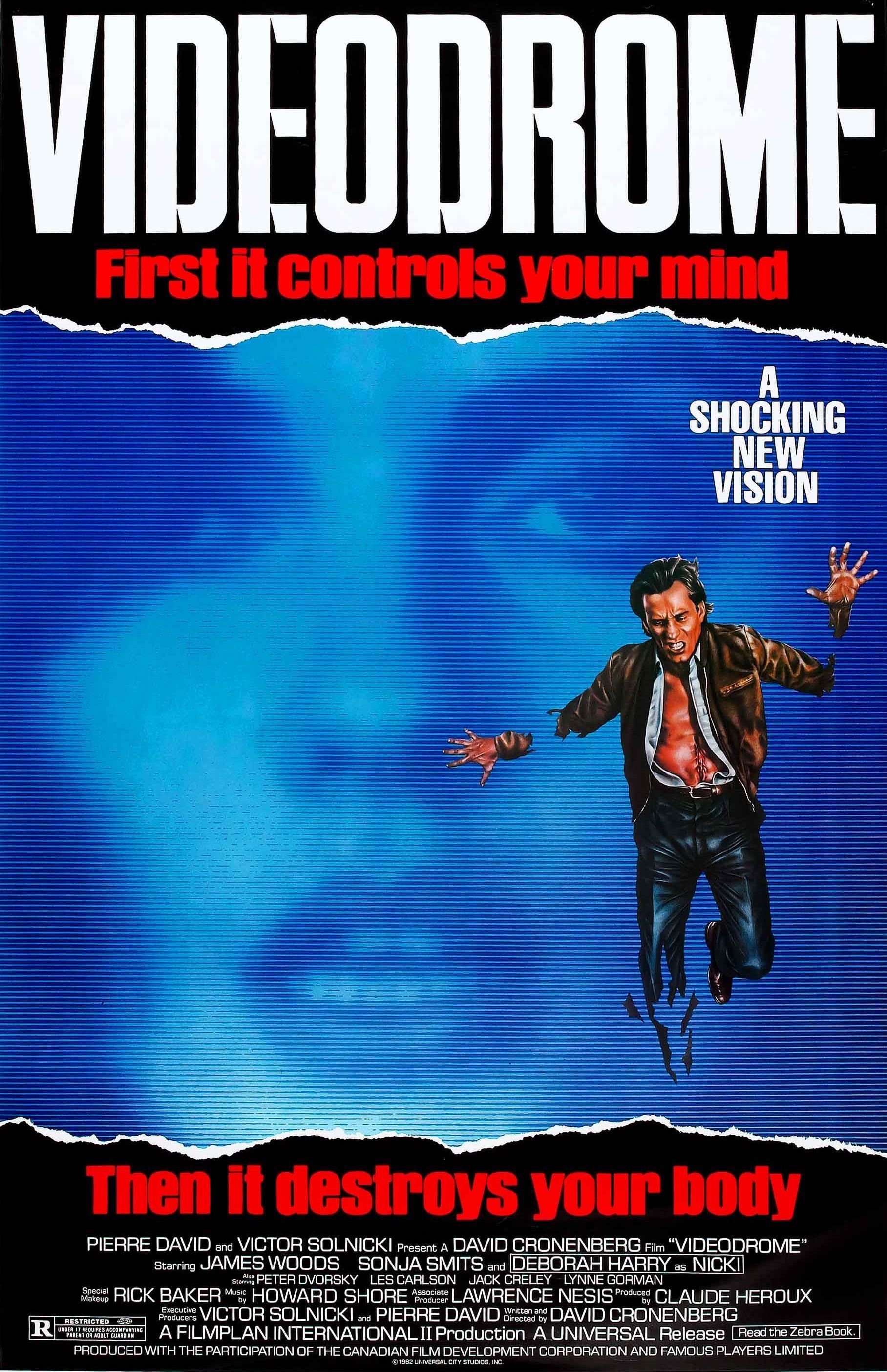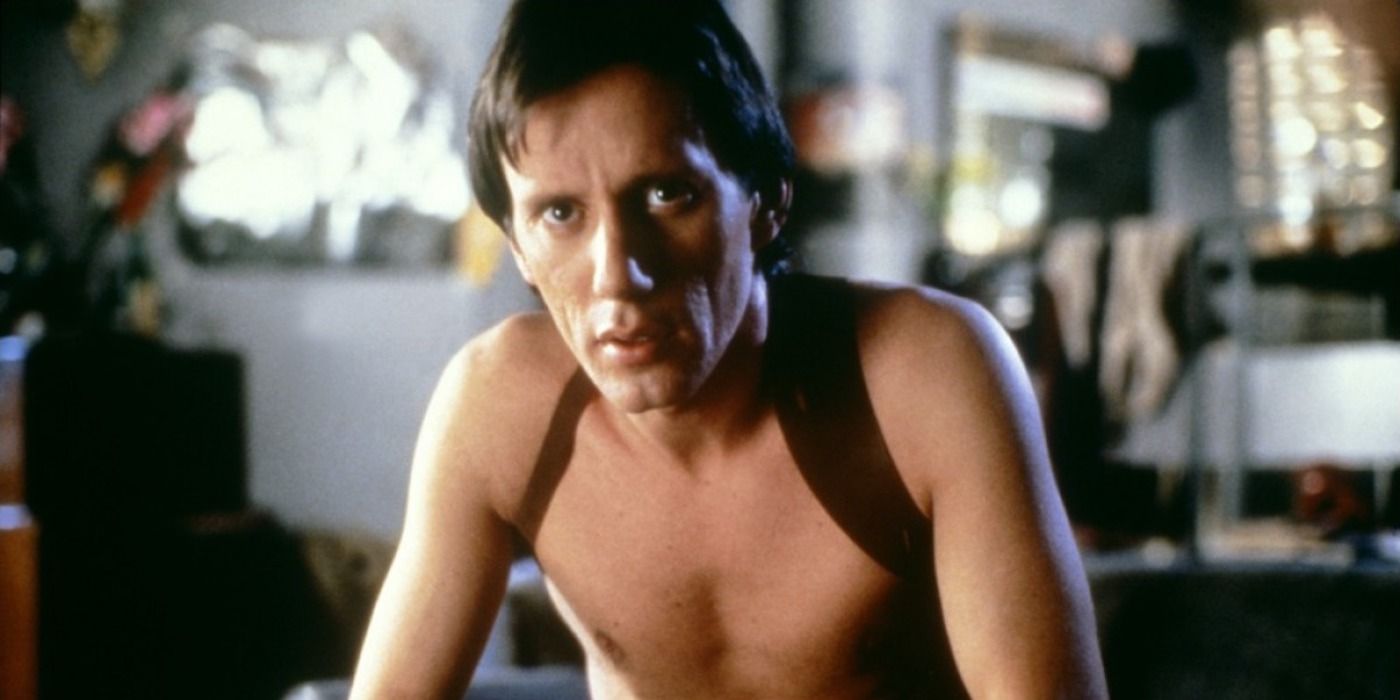The master of body horror knows how to devastate.
The Big Picture
- Body horror genre explores violent distortion of human form, forcing viewers to reflect on self-image.
- David Cronenberg’s
Videodrome
delves into media indoctrination and extremism, showcasing loss of reality. - Max’s descent into obsession in
Videodrome
culminates in his gruesome transformation, a chilling reflection of societal manipulation.
Body horror cinema is among the most disturbing and potentially upsetting subgenres of horror. Unlike slasher or paranormal films in which an exterior threat is responsible for terror, the body horror genre frequently features the violent and grotesque contortion of the human body. By violating an identifiable aspect of the human experience, great works of body horror can force their viewers to think critically about the way they view themselves. Although the subgenre has many great innovators, no one has contributed more to body horror than the Canadian filmmaker David Cronenberg.
Ever since his directorial debut Shivers, Cronenberg has succeeded in presenting viewers with ghastly images using brilliant makeup and practical effects. Cronenberg has proven that body horror can take many shapes and forms; while Scanners and The Fly took a science fiction slant on the subgenre, films like Dead Ringers and The Brood examined the misappropriated application of medical science. Although each of his films contain shocking moments of brutality, no Cronenberg scene is more upsetting than the violent ending of his 1983 masterpiece Videodrome.

Videodrome
- Release Date
- February 4, 1983
- Director
- David Cronenberg
- Cast
- James Woods , Sonja Smits , Deborah Harry , Peter Dvorsky , Leslie Carlson , Jack Creley
- Runtime
- 87
- Main Genre
- Horror
- Writers
- David Cronenberg
- Tagline
- First it controls your mind. Then it destroys your body.
What Is ‘Videodrome’ About?
Examining themes of media indoctrination and violent extremism that were relevant at the time of the film’s release, Videodrome is a prophetic warning about losing one’s grasp of reality. Set in Cronenberg’s hometown of Toronto, the film centers on the aggressive, highly egotistical television station president Max Renn (James Woods) whose station CIVIC-TV runs extremely disorienting programming intended to provoke extreme reactions from desensitized viewers. While Renn is constantly looking for potentially appealing content, his employer Harlan (Peter Dvorsky) shows him an illicit program known only as “Videodrome.” Supposedly broadcast from Malaysia, Videodrome features graphic “recreations” of torture and murder.
The initial footage is disturbing enough, as the graphic content would be upsetting regardless of its authenticity; the notion that viewers would in any way find enjoyment in viewing the program only exemplifies the disturbing aspect of human nature that Cronenberg is analyzing with the film. However, revelations about the origins of Videodrome complicate the viewers’ understanding of the program’s intentions. Max begins to suspect that the footage is not fake, and is broadcast by the actual torturers; it also appears that the broadcasters aim to use the program to kickstart a revolutionary political movement by appealing to disturbed individuals.
While he is not a likable protagonist in any way, Woods does a great job of showing Max’s descent into obsession. His job broadcasting disturbing material has made him desensitized to graphic footage, but Videodrome speaks to him in a way that no other program has; the enigmatic nature of its creation drives Max to succumb to his worst impulses as he tries to learn more about why the program is being spread. The film shows how Max’s obsessionist attitude allows Videodrome to expand its influence; after spending marathon sessions viewing the program, Max begins to help Videodrome find new viewers.
‘Videodrome’s Ending Is the Most Disturbing Cronenberg Scene
Throughout the film, Max’s obsession with Videodrome leads him to have violent fantasies about harming himself and others. A conversation with Videodrome producer Barry Convex (Leslie Carson) leads Max to realize that Spectacular Optical Corporation has recorded his fantasies to inspire future programming. The disturbing twist that Max uncovers is that Videodrome has been weaponized by Harlan to attack viewers across the continent who have become obsessed with its illicit sexual and violent content. Realizing that he is a pawn in a larger political movement, Max desperately tries to free himself from Videodrome’s influence. The film’s most disturbing moment comes when Max completely forsakes his humanity; after being brainwashed by a Betamax tape inserted into his body by Convex, Max ruthlessly murders his former coworkers and attempts to attack his love interest Bianca O’Blivion (Sonja Smith).

‘Videodrome’ Review: David Cronenberg’s 1983 Visionary Body Horror Still Feels New
Forty years later, ‘Videodrome’ still resonates with a new generation.
This is an extremely upsetting ending because it shows that Max has completely lost any sense of individuality; he has become yet another faceless drone whose singular motivation is to recreate the footage he sees through Videodrome. The greatest tragedy within Videodrome is that Max is incapable of freeing himself from the program. Although he retains some of his consciousness as he flees murder charges, Max realizes that he must ascend to the next level of the program so that he can “leave the old flesh” behind. The notion that this would in any way prevent the spread of Videodrome is utterly preposterous, but given Max’s warped worldview in this instance, it makes logical sense to him. Max’s brutal suicide makes for a shocking conclusion that speaks to the way violence continues to permeate. Max’s story is sadly one of many; Videodrome feeds off of the subjugation and seduction of easily corruptible people.
Videodrome’s ending sees Max literally transform into a weapon, as the program has corrupted his mind and forced him to shed his human shell. The grotesque way that his body envelops suggests that by sacrificing himself to Videodrome, Max has become a tool within the program’s continued reign. Max slits his stomach in a way that resembles a VHS player; in this way, Cronenberg implies that he has become more machine than human. What’s most horrifying is that there is a brief flash of recognition in Max’s eyes; it’s as if he realizes what is happening to him, yet is helpless to stop it. The brilliant practical effects from Rick Baker make the sequence even more upsetting.
‘Videodrome’ Is Cronenberg’s Scariest Film
Although he is known for making experimental horror films, Videodrome’s commentary on the dangers of media obsession makes it Cronenberg’s scariest. While Cronenberg does not suggest that art in itself would drive people to commit acts of violence, he does indicate that viewers have learned to have less empathy by distancing themselves from the content that they consume. Initially, the viewers of Videodrome are introduced to the program under the notion that what they are watching is “fake”; by the time they realize the content is legitimate, they’ve already succumbed to the program’s influence. Films like The Brood and Shivers, while terrifying, appeal to the most primal elements of horror; Videodrome presents a horrifying window into what technological oppression is capable of.
Videodrome shows that Cronenberg’s best films combine psychological dread with graphic content. The film is terrifying not just because of the violent nature of Max’s demise, but for how it tracks how a character like him could gradually become part of a mind control conspiracy. Unlike other protagonists in Cronenberg’s films, Max is initially willing to subjugate himself to Videodrome’s influence and understands only too late that he’s no longer in control of his thoughts. In 1983, Videodrome was a breakthrough work of imaginative horror; today, its commentary on the way that violent extremist groups garner new members is horrifically prescient.
Videodrome is available to rent on Amazon.
Rent on Amazon
This article was originally published on collider.com


